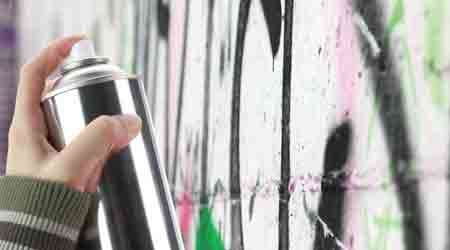Trends and Tactics for Successful Paints and Coatings Applications
Part one of a four-part article on paints and coatings applications
Activities in institutional and commercial facilities change, and interior and exterior surfaces deteriorate and age. To meet demands created by these evolving conditions, paints and coatings manufacturers upgraded their products in recent years to deliver greater performance, affordability and sustainability.
Developments in three key areas of paints and coatings — graffiti prevention and removal; concrete coatings; and anti-microbial and anti-bacterial coatings — can help managers specify products more effectively and help technicians complete projects that deliver performance and durability.
Graffiti considerations
Graffiti prevention and removal can be more successful when managers specify coatings with graffiti-deterrent capabilities. The two types of graffiti coatings are sacrificial and permanent.
Workers wash away sacrificial coatings with the graffiti and apply a new sacrificial coating. Permanent coatings prevent graffiti adherence, so workers simply remove the graffiti.
When selecting paints and coatings for interior or exterior areas that might be subject to graffiti, managers should choose products with appropriate coating qualities. In addition to project requirements related to the substrate, preparation method, and application method, the selection also should take into account:
Coverage. This factor relates to the amount of pigment the product contains. A formulation with more pigment is more dense, so it will cover better and go farther than a less expensive formulation that contains a large amount of thinner.
Environmental impact. If the manufacturer uses harsh chemicals in the formulation, the product can harm the environment. Workers should be able to clean up a graffiti-prevention coating using water and either a pressure washer or a brush.
Performance life. The coating lasts longer if it is formulated to withstand multiple cleaning cycles before requiring a new application.
Drying time. Application drying time affects cost and usability, so a shorter drying time is another advantage.
Resistance. The interior product should be able to withstand the range of indoor temperatures and humidity levels, while an exterior product should be able to withstand a wider range of temperatures, weather situations, and other environmental conditions, such as wind-blown dirt, dust, and mold spores.
Application method. The flexibility of the application method — brush, roller, or spray — affects time and cost, so managers must consider multiple application methods that are appropriate for a range of surfaces, including flat areas and trim. Flexibility also applies to being useable on many architectural materials and features, including building exteriors and interiors, fences, walks, glass, brick, and stone.
Related Topics:















